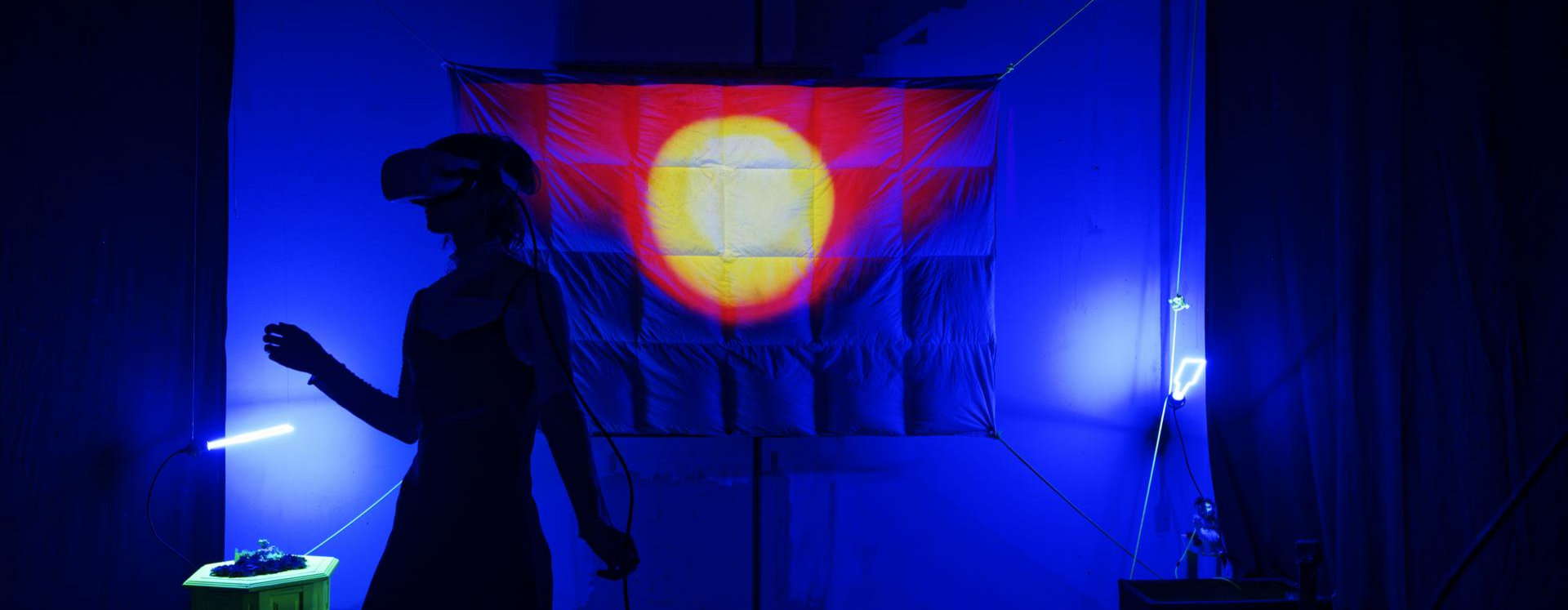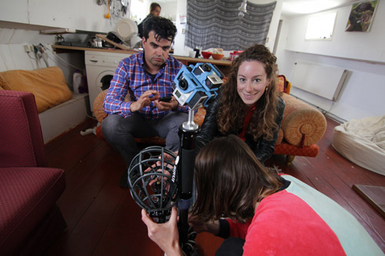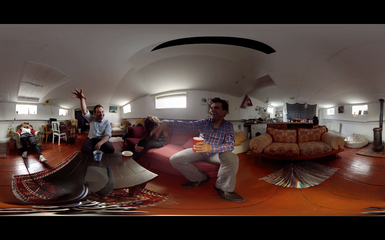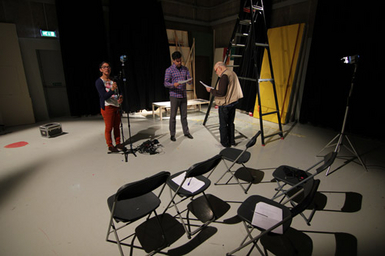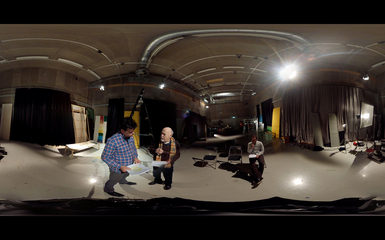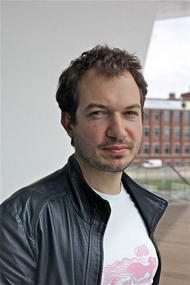Brand New Trust? Film spectatorship in the context of immersive cinema
'Spectatorship, Trust, Responsibility. Long John Silver is not interested in those. All he cares about is his missing eye and an old gold treasure. I, on the other hand, am concerned. I start understanding why Captain Flint insisted on signing an agreement before departure. We left the port ahead of schedule and the ship will have to be finished on the way. We are reaching open waters soon. The question is who is going to be the captain and who the master of this journey.'
Space
“My research started with a fascination for the combination of video and live performance.
I was focused on the question: how to incorporate the qualities of space into the fabric of film? My presence, my position and my moving around in a shared space would then become an integral part of the film experience, an element fundamentally different from cinema as we know it. The possibility to use physically perceived immersion of the spectator in the film fascinated me as a tool for storytelling.
Immersiveness as a tool
Immersive visual techniques do not literally transport me into an alternative reality and, as a spectator I am physically aware of that. Nevertheless they have the potential to convince sufficient part of my brain that something is true. This makes it possible to transform presence, space and realness of perception into instruments of the narrative. My focus here is on the changes this introduces in the debate on film spectatorship today.
The Frames of Trust
This immersive condition opens up new perspectives for conceiving film spectatorship. I decided to start by asking one precise question: How does the immersive condition affect the trust relation between maker and spectator? Any unwritten contract has an element of trust in it. For example I trust the person I lend my car to. Cinema is also based on an unwritten contract. I, the spectator, trust the director when buying my ticket and sitting in the darkness in front of the film frame.
In terms of the medium I use: I firstly experimented with holographic diffraction glasses and installations based on the use of reflections. Later I decided to proceed with the Oculus Rift. This screening device creates the impression that one is physically present in the scene and gives the possibility to explore the space by looking around in 360 degrees. This means first of all, a very different cinematic agreement. My goal is to provoke a discussion about this new condition by working through the medium of film itself. I have done that in the form of an essay film. Before the start of each screening spectators are asked to countersign a formal written agreement. This performative element, from the very beginning, provides a perspective from which to “read” the essay. Inviting people to sign an agreement is asking them to think and talk about the experience they are about to step into. But not signing or not fulfilling the agreement may equally bring us fruitful discussions. With this agreement, I ask the spectators (and myself as well) to act deliberately and conscientiously and I make them come up with opinions, conclusions and critical positions."
Interview by Jan-Ewout Ruiter, March 2015
